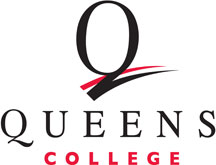Have you ever wondered how the CUNY Queens campus is run? Sure, we all have the preconceived notion that administrators such as the University President and other such officers govern the school, but there’s actually a governing system in place known as the Academic Senate. The Knight News recently had the opportunity to sit down with Dave Fields, who has been with the Academic Senate for the past 50 years in roles such as the Academic Senate’s Deputy Chair, Undergraduate Curriculum Committee Chair, Elections Committee Chair, and Teaching Evaluation & Excellence Chair. Fields now serves as the Senate’s Parliamentarian, upholding the laws of the Senate. In addition, Fields works as the CUNY Law School Senior University Dean. Fields went into great detail about the history of the Senate, how it operates, and why students should get involved.
In talking about the governance system preceding the Academic Senate, termed the “Faculty Council,” Fields explained “…The faculty council was a body of tenured faculty. It was chaired by the QC president and had the same authority of, what would be, the Academic Senate. Curriculum, scholastic standards, campus life, all of which are the duties customarily cared for by a Senate. Administrators, Vice President’s and tenured faculty voted on that body.” Fields also noted the lack of student representation in the faculty council. He mentioned that the meetings of the faculty council were closed doors, students were not permitted to enter.
At the beginning of the 1970s, the Academic Senate was born. Fields emphasized that in comparison to the prior governance system — the faculty council — “…The Senate, even before the open meetings law, was always open. Any member of the QC community could come.”
As for what the Senate was like at the start, it was — and still is — composed of one-third students and two-thirds faculty. Fields noted the intense student activism in the senate. He recounts that elections of students and faculty to the senate were quite intense, to the point where they were frequently contested. Fields further explained the starting of the senate, describing the room — Kiely 170 — as a packed scene.
“The Senate has played a vital role in bringing students and faculty together,” said Fields. “It [the senate] expands the scope of authority to the community and [the freedom to discuss] senate policies and procedures.” He even made a note to mention that the Senate was involved in national politics, like adopting resolutions condemning the war in Vietnam during the early ’70s.
As for how the Senate operates, it’s simple. The Senate today consists of 60 members, 40 of whom are faculty and 20 students, meeting once a month to approve proposals from each of its standing committees. The most active committees are the Undergraduate Curriculum Committee, the Elections Committee, and the Undergraduate Scholastic Standards Committee. These committees — in addition to the other standing committees — submit proposals to the Senate for their approval, which are then sent off to the CUNY Board of Trustees for the final seal of approval. Each of the committees addresses different areas of academic affairs, including problems from the Undergraduate Curriculum Committee, proposals from different departments for creating new classes, amending a class description, etc.
The Academic Senate has officers that serve to carry out the duties of the senate, as well as an executive committee that assists with said duties. Every year, a Chair, Deputy Chair, and Secretary are annually elected to serve the Senate. The Executive Committee consists of six faculty & three students — some of whom are the officers of the Senate as aforementioned. The Senate is governed by parliamentary procedure, specifically Robert’s Rules of Order. “Parliamentary law is the substitute for anarchy,” Fields notes. “(It) makes everyone have the same rules to follow, so instead of fighting over rules, parliamentary law is a mechanism where you can argue over the mechanism of proposals instead of how to defend them.”
The Academic Senate is held once a month on the second Thursday of each month in Kiely 170. For more details, please see https://www.qc.cuny.edu/Academics/AcademicSenate/Pages/default.aspx.
“[You should] run for the senate, join a committee,” said Fields. “Do something for your campus, get involved.”











